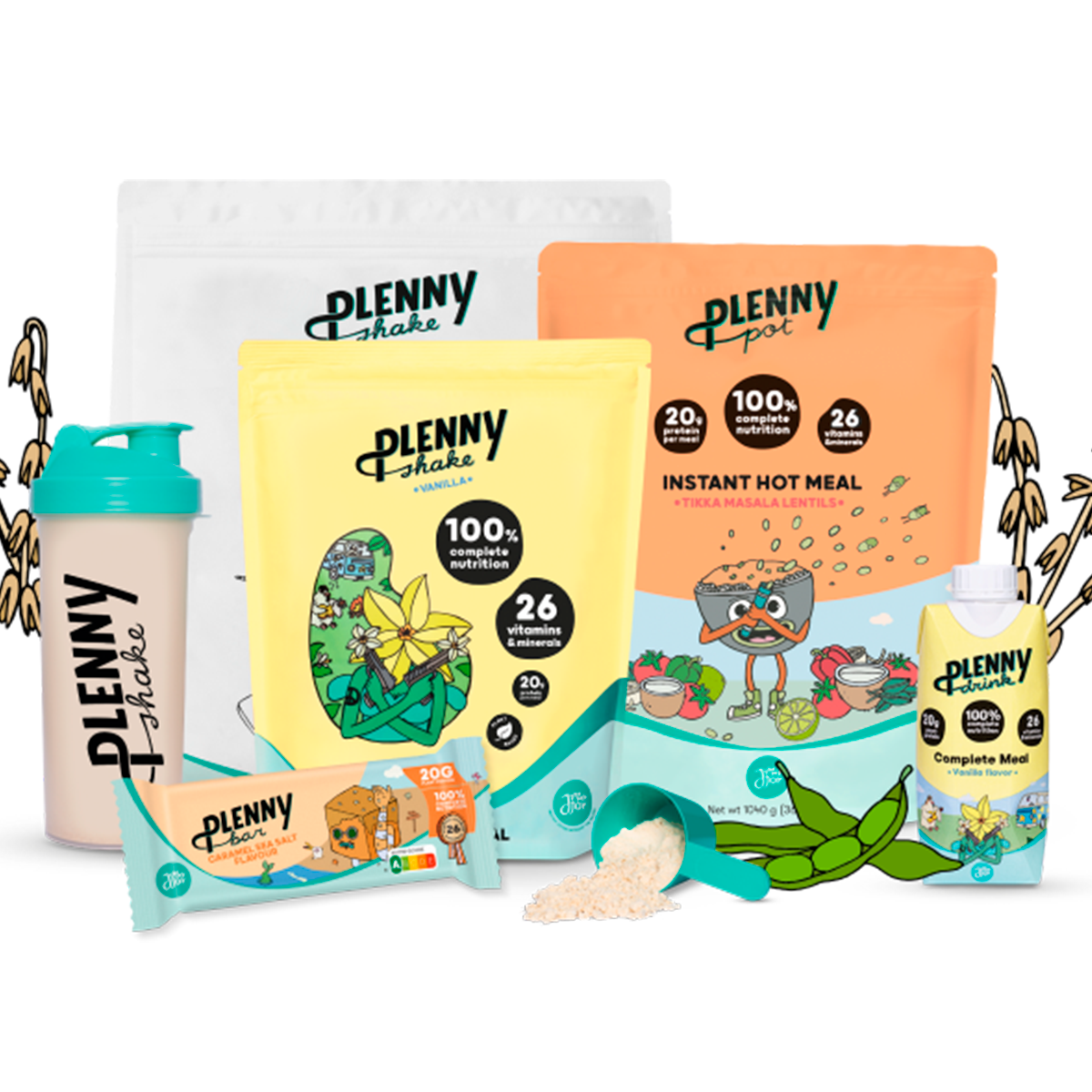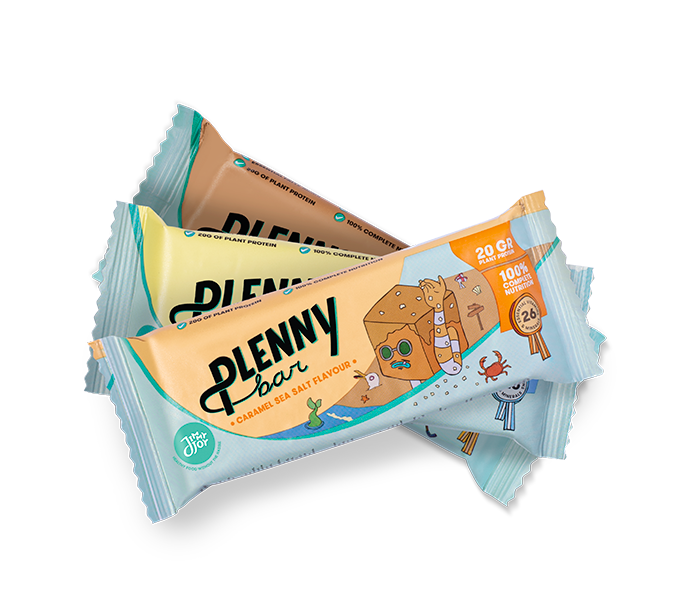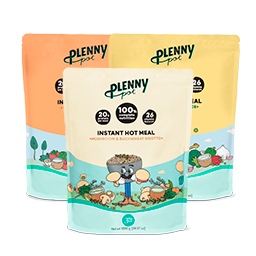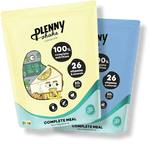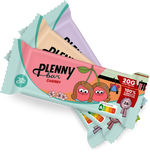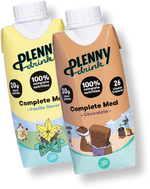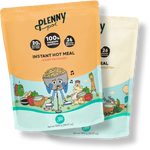Unlearning Myths About Processed Foods

Word on the street is that processed foods are the bad guys: they may taste and look good, but they are bad for your health. So is this an urban myth or is it real?
Let's break down processed foods and find out!
Quick menu:
- What are processed foods?
- The origins of processed foods
- Your favorite foods are processed
- Four degrees of processing
- Unprocessed or minimally processed foods
- Processed culinary ingredients
- Processed foods, Ultra-processed foods
- The rise of instant foods and the rise of global obesity
- So which processed foods are good?
- The Ultimate Processed Food TLDR: Its Essence
What are processed foods?
A processed food is any food that has been altered in some way during its preparation. [1] Virtually any activity turns whole foods into processed foods: washing, cleaning, grinding, cutting, chopping, heating, pasteurizing, blanching, cooking, canning, freezing, drying, dehydrating, blending, and packaging.
This means that most foods are processed to some degree: the frozen spinach in your freezer is processed, the organic sauerkraut from the farmers market you impressed your in-laws with is processed, your precious Plenny fig and almond bar is processed, and they're all crazy healthy.
The origins of processed foods?
Food processing has been around since the dawn of civilization [3]. Mankind has always wanted hassle-free solutions to their daily problems, and food processing made it possible.
Do you recognize this problem?
"Damn, my food goes bad before I have a chance to eat it!"
Well, processing can fix this! It can extend the shelf life of a product while preserving its nutritional values. Processing is, and always has been, essential to human food security [4].
Your favorite foods are processed
Everyday staples like beer, bread, and tofu are derived from ancient processing methods. The history of bread seems to have begun about 30,000 years ago. Before you can enjoy the satisfaction of cutting the crust off a freshly baked loaf, it must be grown, harvested, the grain milled, and that's when the real "bread making" begins. The process then requires adding water, salt, a rising agent, and letting time and temperature do their work. Quite a bit of processing.
Four degrees of processing
To help people better understand processed foods, a group of Brazilian scientists developed a classification system called "NOVA" [5]. The system divides food products into four groups, based on the degree of processing.

Unprocessed or minimally processed foods
Unprocessed foods are whole foods or raw ingredients that have not been processed or have been minimally processed. This includes most fresh fruits and vegetables on display at your local grocery store, but also nuts and eggs [2].
Minimally processed foods are whole foods that are altered by – well – processes. We mentioned them in the previous paragraph: washing, cleaning, grinding, cutting, chopping, heating, pasteurizing, blanching, cooking, canning, freezing, drying, dehydrating, mixing and packaging.
Processed culinary ingredients
Processed culinary ingredients are products like butter, oil, sugar, and salt. Without processing, there would be no way to extract precious oils from nuts or seeds. And who would want to live in a world without olive oil?
Processed foods
Processed foods are foods like canned vegetables, cheese, and freshly made breads. They are basically made by adding Group 2 products to Group 1 products.
Ultra-processed foods
Ultra-processed foods are foods that have been subjected to chemical procedures [8]. These processes can make it so that you can no longer recognize the original plant or animal sources used for these food products [9]. One example? Candy! Most of those irresistible, colorful-looking sweets are made with gelatin, derived from the processing of animal skin and bones [10]. And of course, loaded with sugar. The devil in disguise comes in the form of high amounts of sodium (salt), trans fats, and sugar.
This food group is often said to be high in “empty calories,” because it is low in nutrients and high in energy density (Mr. Sugar has you covered *wink-wink*).

The rise of instant foods and the rise of global obesity
Before the pandemic era, when life was busier, processed foods had become more popular in recent decades. People were looking for quick and easy solutions, and food manufacturers gladly complied by offering consumers instant and ready-to-eat foods. The main features of these foods were a quick preparation time (if any) and a long shelf life. However, many food products were stuffed with preservatives, additives, and more salt and sugar than necessary. These factors lead to a change in global health, for example, an increase in the obesity rate.

So which processed foods are good?
Ready-to-eat foods are not the enemy, and neither are calories. Primarily, the healthiness of a food product depends on its nutritional profile. Pay attention to nutritional specifications and look for high numbers in the categories of fiber, protein, vitamin A, C and D, calcium, iron, magnesium and potassium.
And if you have no idea about good processed foods, here is a list:
- Whole wheat pasta and noodles
- Vegetables: fermented, fresh or frozen.
- Fruits: dried, fresh or frozen
- Beans and legumes
- Canned fish
- Nut butters
- Yogurts
- Oatmeal
- Rice
- Plenny meals
Of course, we couldn't pass up this opportunity to mention Plenny meals - class A processed foods with complete nutrition and 172 proven health benefits . Seriously, processed foods don't get any better than this.
The ultimate processed food
Processing ingredients into powder form is a great way to incorporate rich nutrients into our daily diet. Powders require little preparation and are versatile. Think of superfood powders like spirulina and baobab – they can be easily sprinkled over a bowl of granola, dissolved in a glass of water, or hidden in a delicious pancake. These are all ways to enrich your nutritional intake, without the hassle of preparing whole, raw foods.
But while most superfoods are just one ingredient, Plenny meals contain a wide variety of nutrient-dense ingredients that have come together to provide the ultimate meal. These ingredients have been carefully selected for their nutritional values and health benefits. In fact, Plenny meals have 172 health benefits in total! True story.
TLDR: the essence of this
Here’s the gist: Don’t cut processed foods out of your life like a toxic ex-lover. Instead, learn to identify right from wrong. Processed foods are great when it comes to convenience. Canned beans and Plenny smoothies save us a lot of prep time and ensure a healthy daily intake of micro and macro nutrients.
If you're trying to navigate the sea of processed foods, ingredient lists are your new compass. Make sure to avoid foods that contain added sugars, high levels of trans fats, or are loaded with salt. And add some Plenny meals to your weekly meal plan. They're low in sugar, salt, and saturated fat, and packed with healthy plant-based nutrients—the ultimate processed food. And did we mention the 172 health benefits ?
The benefits are endless and the value for money is incredible:
Each meal has 400 kcal and is 100% vegan;
Each meal contains 26 essential vitamins and minerals , 20 g of protein, slow carbohydrates, healthy fats and fiber (insoluble);
Each meal is GMO-free, palm oil-free , developed by dietitians and nutritionists ;
Each food has 172 scientifically proven health benefits for physical and mental health.
From €1.35 per meal with a 30-day risk-free money-back guarantee.
Why not give it a try?
Sources
[1] Connie M Weaver, Johanna Dwyer, Victor L Fulgoni, III, Janet C King, Gilbert A Leveille, Ruth S MacDonald, Jose Ordovas, David Schnakenberg, Processed foods: contributions to nutrition, The American Journal of Clinical Nutrition , Volume 99, Issue 6, June 2014, Pages 1525–1542.
[2] Connie M Weaver, Johanna Dwyer, Victor L Fulgoni, III, Janet C King, Gilbert A Leveille, Ruth S MacDonald, Jose Ordovas, David Schnakenberg, Processed foods: contributions to nutrition, The American Journal of Clinical Nutrition , Volume 99, Issue 6, June 2014, Pages 1525–1542, https://doi.org/10.3945/ajcn.114.089284
[3] Kim, E. (2013). Processed Food: A 2-Million-Year History. Scientific American.
https://www.scientificamerican.com/article/processed-food-a-two-million-year-history/
[4] Connie M Weaver, Johanna Dwyer, Victor L Fulgoni, III, Janet C King, Gilbert A Leveille, Ruth S MacDonald, Jose Ordovas, David Schnakenberg, Processed foods: contributions to nutrition, The American Journal of Clinical Nutrition , Volume 99, Issue 6, June 2014, Pages 1525–1542, https://doi.org/10.3945/ajcn.114.089284
[5] Flemish Institute of Healthy Living (2020) Implications of food processing: the role of ultra-processed foods in a healthy and sustainable diet. Laken (Brussels), Online: gezondleven.be
[6] Booth, J. (2018). It turns out ripe and unripe bananas have different health benefits — here's what you need to know. Business Insider.
[7] NHS website. (2020). Eating processed foods . nhs.uk. https://www.nhs.uk/live-well/eat-well/what-are-processed-foods/#:%7E:text=A%20processed%20food%20is%20any,canning
[8] Smith, A. (2020). How do processed foods affect your health? Medical News Today. https://www.medicalnewstoday.com/articles/318630
[9] Popkin. B. 2020. Ultra-processed foods' impacts on health . 2030 – Food, Agriculture and rural development in Latin America and the Caribbean, No. 34. Santiago de Chile. FAO.
[10] CBC Radio (2019). Pig skin, dead wasps and bee vomit: what's really in that candy? CBC
[11] Collins, S. (2020). Hidden Dangers of Ultraprocessed Foods. Nourish by WebMind.

